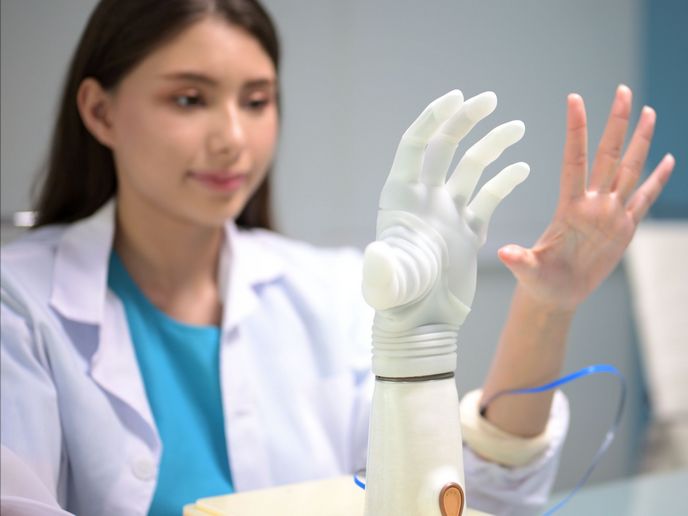Novel insights into amputee acceptance of hand prostheses
Modern-day prosthetics can be functional and well-adapted to performing everyday tasks. A longstanding weakness however is that they often look and feel different. For amputees, this can create a body integrity problem. In other words, they don’t feel that their artificial limb is really an integral part of themselves.
Cognitive neurophysiology in prosthetic design
Issues surrounding cognitive neurophysiology of body representation have not always been well-integrated into designs. This issue of embodiment has long intrigued neurologist and biomedical engineer Giovanni Di Pino, RESHAPE project coordinator from the Campus Bio-Medico University of Rome. “Cognitive neurophysiology in prosthetics is about the part of the brain – the sensory motor control loop – that says that’s your hand,” he explains. “When you move your hand, and a lot of information sent to your brain matches – then your brain will tell you that that’s your hand.” In order to move prosthetic design in this direction, the RESHAPE project sought to pull together the disciplines of robotic and neural engineering with cognitive and somatosensory neurophysiology. The project team analysed how the brain builds body representation in both able-bodied people and amputees. It next sought to identify specific features of prostheses that achieve embodiment. An amputee is likely to reject a powerful prosthesis that does not feel life-like. “To do this, we put amputees in a dedicated virtual reality environment and changed features of their prosthesis,” notes Di Pino. “The idea was to identify features that make the prosthesis feel most natural.”
Improving brain plasticity
Di Pino explains that embodiment is a process that can be learned. It can be thought of in the same way that a tennis racquet becomes an extension of a tennis player, or drumsticks at one with a drummer. The team investigated novel physical and control paradigms to facilitate embodiment. A nerve transfer was used to redirect the ‘natural’ sensory and motor functions of the lost hand towards the pectoral muscles, where interfacing was easier. A second volunteer had an implant inserted in the bone of the stump, to establish physical connection between the prosthesis and the user. Finally, the project also sought to modulate brain activity through non-invasive stimulation. The idea of this was to see if brain plasticity could be improved, to help amputees ‘learn’ to embody their prosthesis. This was done by developing an autonomous robotic magnetic stimulator able to neuromodulate while the head of the subject was moving, and a super-selective electrical stimulator of brain networks.
Helping amputees to feel embodied
The success of the brain plasticity tool could lead to the launch of a spin-off, and eventual commercialisation. “Non-invasive neurostimulation has applications beyond amputees,” he adds. “There is a huge range of potential uses, including the treatment of depression, strokes and Alzheimer’s.” In the meantime, work on helping amputees to project the prosthesis into their self will continue. Next steps include increasing sample sizes, and investigating the impact of the user-prosthesis artificial sensorimotor loop beyond body representation. “The final aim is to give amputees a discrete, easily wearable prosthesis that puts them in control,” says Di Pino. These techniques could also be used to develop functioning exoskeletons, and to fine-tune a wide range of human/artificial interactions.
Keywords
RESHAPE, amputee, prostheses, neurophysiology, prosthetic, brain

